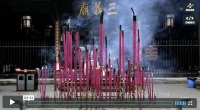Can the Chinese ‘wooing’ of primary-industry-rich Australia be stopped? “China has to find something to do with its enormous cash reserves, and domestic investment could lead to inflationary pressure. By shifting these funds abroad, China is able to use them to build its economic strength without putting pressure on the economy at home.” The Chinese are already capable of taking control of world brands. Lenovo already has IBM, and carmaker Geely is about to seal the deal with buying Volvo. What next?
– – –
What Australia can gain from China’s buying spree
Commentary: Chinese companies look south for opportunity
By Bruce McLaughlin
Source – Market Watch, 20 Jan 2010
SYDNEY (MarketWatch) — The $1.5 billion bid by Shanghai Bright Food Group for the sugar and renewable-energy businesses of Australian conglomerate CSR has been one of the leading stories in the Australian business press over the past week.
While CSR (CSRLF 1.65, -0.07, -4.07%) has rejected the bid for now, the implications of Bright’s approach are sinking in for Australian businesses. The broad, academic idea that China has money to invest has suddenly become real.
Until now, most of the high-profile, big-money Chinese attempts to invest in Australian business have focused on the resources sector. The best-known of these have fallen through, such as the almost $50 billion liquefied-natural-gas deal between Woodside Petroleum (WOPEF 36.00, -1.10, -2.97%) and PetroChina (PTR 108.74, -0.40, -0.37%), and the infamous collapse of Chinalco’s attempt to invest almost $20 billion in joint ventures and an equity stake in Rio Tinto (RTP 199.35, +0.15, +0.08%).
Still, celebrations earlier this month to mark Yanzhou Coal’s (YZCHF 2.00, +0.10, +5.26%)successful acquisition of Felix Resources show that large-scale Chinese investments in Australia are succeeding, and relationships are continuing to blossom. Minmetals’ agreement to buy OZ Minerals (OZMLF 0.86, -0.01, -1.15%), Wuhan Iron & Steel’s equity investment in Centrex Metals (CTXXF 0.67, 0.00, 0.00%), and Hunan Valin’s(HNHS.F 0.00, 0.00, 0.00%) agreement to purchase a stake in Fortescue Metals(FSUMF 4.03, -0.15, -3.59%) are further examples of successful Chinese investments in Australia.
While smaller Chinese companies have been looking for opportunities to invest in the farming, food-processing, manufacturing and real-estate sectors in Australia for some time, the Shanghai Bright approach is the first attempt to make a very large investment outside the resources sector. The move signals that many industrial sectors are now in play.
The approach drew predictable howls of protest from some quarters of Australian politics. National Party leader Barnaby Joyce — who was among the top opponents of the Chinalco-Rio Tinto and PetroChina-Woodside deals — condemned the move. He has, though, always been mysteriously quiet on ownership of Australian assets by non-Chinese state-controlled companies, such as SingTel’s (SNGNF 1.99, -0.12, -5.78%)purchase of Australia’s second-largest telecom, Optus.
The rest of Australia, however, needs to sit up and take notice of Shanghai Bright’s move, and of what this heralds for the future.
Shanghai Bright’s approach to CSR was part of the rapidly accelerating implementation of China’s decade-old “Go Out” policy, under which Chinese companies are encouraged to invest overseas. With its huge primary industry base and its relative proximity to China, Australia was always destined to be one of the biggest beneficiaries of this policy. Australian companies now stand to benefit from access to a vast new source of capital, with Chinese companies keen to make acquisitions and equity investments across the board.
While governments around the world offer incentives for inward investment, China is one of the few countries offering incentives to its own companies to invest overseas. Chinese companies planning to expand abroad now benefit from tax breaks and grants from both national and local governments. Government bodies which used to exist solely to attract foreign investment now provide assistance to companies looking for offshore investment opportunities, while state-owned banks provide low-interest, easily approved loans.
China has a variety of reasons for encouraging its companies to invest abroad. The one most often mentioned is the country’s continuing need for energy and resources, but different factors are pushing investment in other industries.
China has to find something to do with its enormous cash reserves, and domestic investment could lead to inflationary pressure. By shifting these funds abroad, China is able to use them to build its economic strength without putting pressure on the economy at home.
Other factors are more industry-specific. Lenovo’s (LNVGF 0.65, -0.03, -3.73%) $1.75 billion purchase of IBM’s (IBM 122.98, +0.17, +0.14%) personal-computer unit in 2005, for example, gave the Chinese firm access to IBM’s PC technology and its well-respected international brand name — for a limited period — as well as an international sales team and distribution network.
Similarly, Geely’s proposed purchase of Volvo would give it access to a high-end brand name, a global dealer network, and manufacturing and design technologies that are streets ahead of those used to make Geely’s rather clunky cars. (Although, like many people, however, I remain mystified by the motives for Sichuan Tengzhong’s planned purchase of Hummer.)
It would be reasonable to expect a wave of investments in everything from conglomerates to small and medium-sized enterprises, in areas including arable farming, dairy, meat production and processing, and food processing and packaging over the next few years.
Risks and rewards
There are obvious concerns. The huge gulf in corporate culture is likely to lead to misunderstandings and disputes, and a degree of antipathy towards China among some politicians could cause problems.
The rush for Chinese cash could also lead to the sort of recklessness that we saw during the first waves of investment into China in the 1990s, possibly resulting in some unviable partnerships and unworkable deals.
There is also a very real concern about Australia ceding control of its mineral wealth to foreign powers, although politicians’ expressions of concern would be more credible if they were applied to all foreign companies rather than just those from China.
However, this wave of Chinese investment offers great opportunities for Australia. Business owners who are seeking to sell out now have a new market, and those looking for equity investment to fund their expansion have a new source of capital.
Companies hoping to expand and sell their products to China may have obvious synergies with Chinese investors: A Chinese investor could offer an Australian food manufacturer both capital and access to the Chinese market.
There was some hostility towards Japanese investment in Australia in the 1980s, but companies such as Toyota (TM 75.99, +0.30, +0.40%) are now a well-integrated part of Australia’s industrial base. There is every chance that we will see a similar success story with China.
Bruce McLaughlin is chief executive of Sinogie Consulting, a research and consulting company with offices in Sydney, Hong Kong and Shanghai. Sinogie provides corporate investigation, policy analysis, market research and other consulting services, and helps foreign companies find and vet Chinese partners, acquisition targets and investors. Sinogie also publishes “China Tender Bulletin” twice each week.
Filed under: Australia, Influence, International Relations, Market Watch, Soft Power










The Sharing Circle